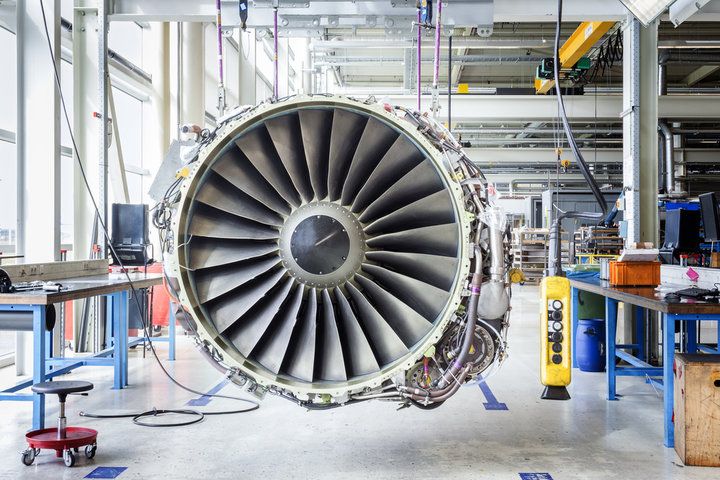
In the context of aircraft maintenance, OSV (Overhaul Shop Visit) refers to a visit to the workshop to carry out a major overhaul or complete overhaul of a component or engine. Unlike on-line maintenance, in an OSV the component is physically removed from the aircraft and sent to a specialized workshop, where a comprehensive intervention is carried out.
The goal is to return the equipment to a condition close to the original factory, complying with all technical specifications, replacing worn or defective parts, and applying advanced inspection, calibration and adjustment procedures.
What does a typical OSV include in an aircraft engine?
During an engine OSV, the following steps are typically executed:
- Complete disassembly of the engine.
- Thorough inspection of all parts using methods such as ultrasound, X-ray, or liquid penetrants.
- Mandatory replacement of certain critical components due to regulations or service life.
- Reassembly under manufacturer-certified procedures.
- Bench tests to verify performance before reinstallation on the aircraft.
This process is regulated by regulations such as EASA in Europe or FAA in the United States, and manufacturers specify in their manuals the flight intervals or time between OSV visits.
Ranking by levels: from 1 to 8
The numbers 1 to 8 in the context of OSV indicate the technical scope, depth and complexity of the intervention. Although this classification may vary between manufacturers and operators, in practice it is understood as follows:
Low levels (1-4): Minor maintenance
- Level 1-2: Visual inspections, minor adjustments, fluid change. I work fast and often online.
- Level 3-4: Partial opening, replacement of minor parts, more detailed calibrations.
Intermediate levels (5-6): Structured repair
- Level 5: Disassembly of critical parts, non-destructive testing, repair of key components.
- Level 6: Almost total revision of the component, multiple replacements, exhaustive tests, fine tuning.
High Levels (7-8): Full Overhaul
- Level 7: Complete refurbishment, systematic replacement of components, intensive testing.
- Level 8: Maximum level. It includes technological upgrades, structural modifications and advanced certification.
Why is this classification important?
Decisions on the level of intervention have a strong impact on costs, times and operational planning. The difference between a level 6 and a level 7 can mean additional days of immobilization of the aircraft and thousands of euros of difference. For this reason, it is common for airlines and MRO (Maintenance, Repair and Overhaul) to negotiate and analyse in detail the appropriate level of each OSV.

